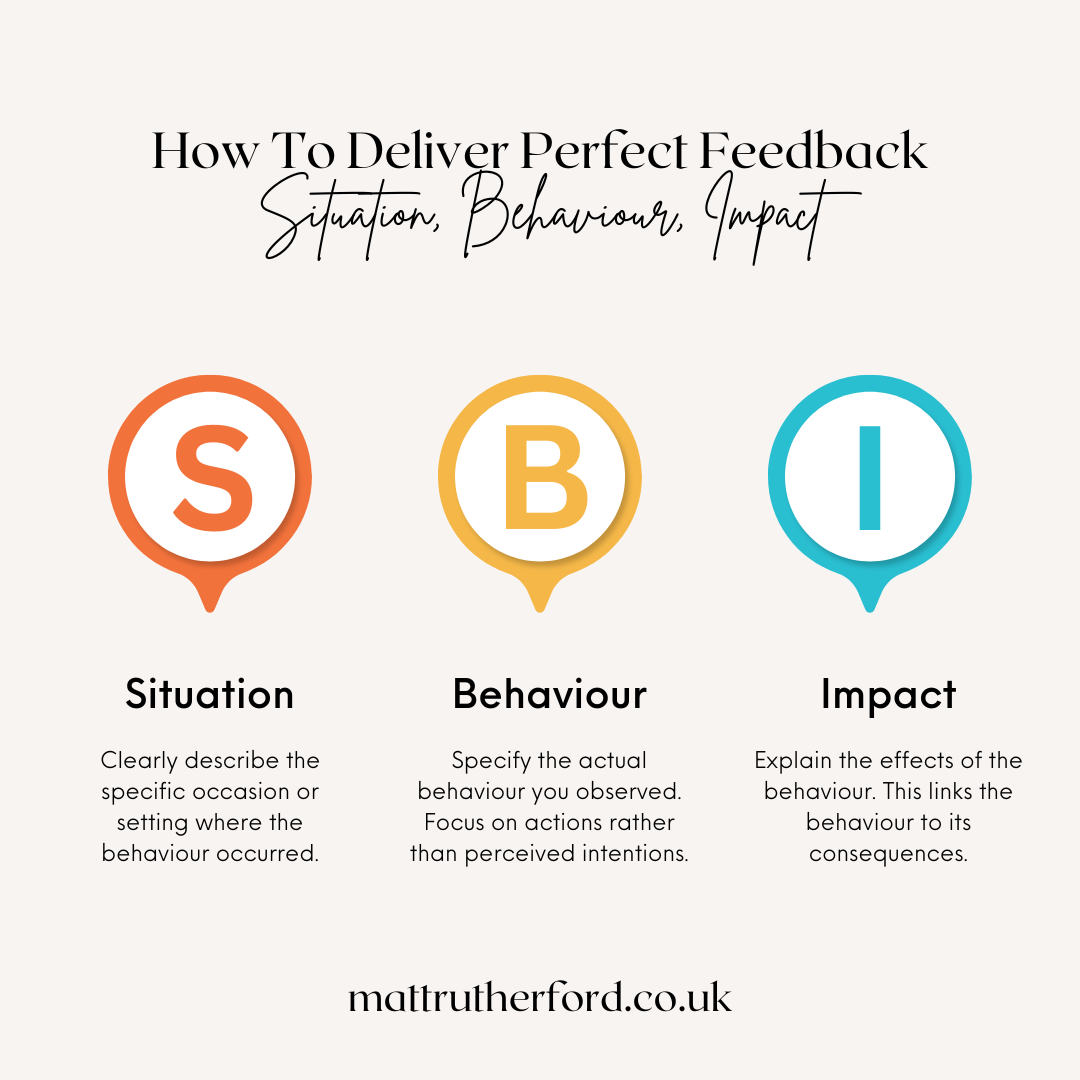One of the most frequently asked questions in 1:1's is 'how do I give feedback to person x?'. To answer, I always coach the Situation Behaviour Impact model.
Giving feedback can be a minefield.
The way you deliver feedback is important. A good structure can make or break how it is received and the outcome it produces.
An effective way to give feedback with clarity is the "Situation, Behavior, Impact" model. The SBI framework works well in constructive AND positive feedback situations.
This structure helps ensure that your feedback is specific and focused on improvement. It also helps to reduce emotion in the process.
Here's how you can use SBI to enhance your feedback practice.
Understanding the SBI Model
The SBI model breaks down feedback into three components:
This post is for subscribers only
Sign up now to read the post and get access to the full library of posts for subscribers only.
Sign up now
Already have an account? Sign in
